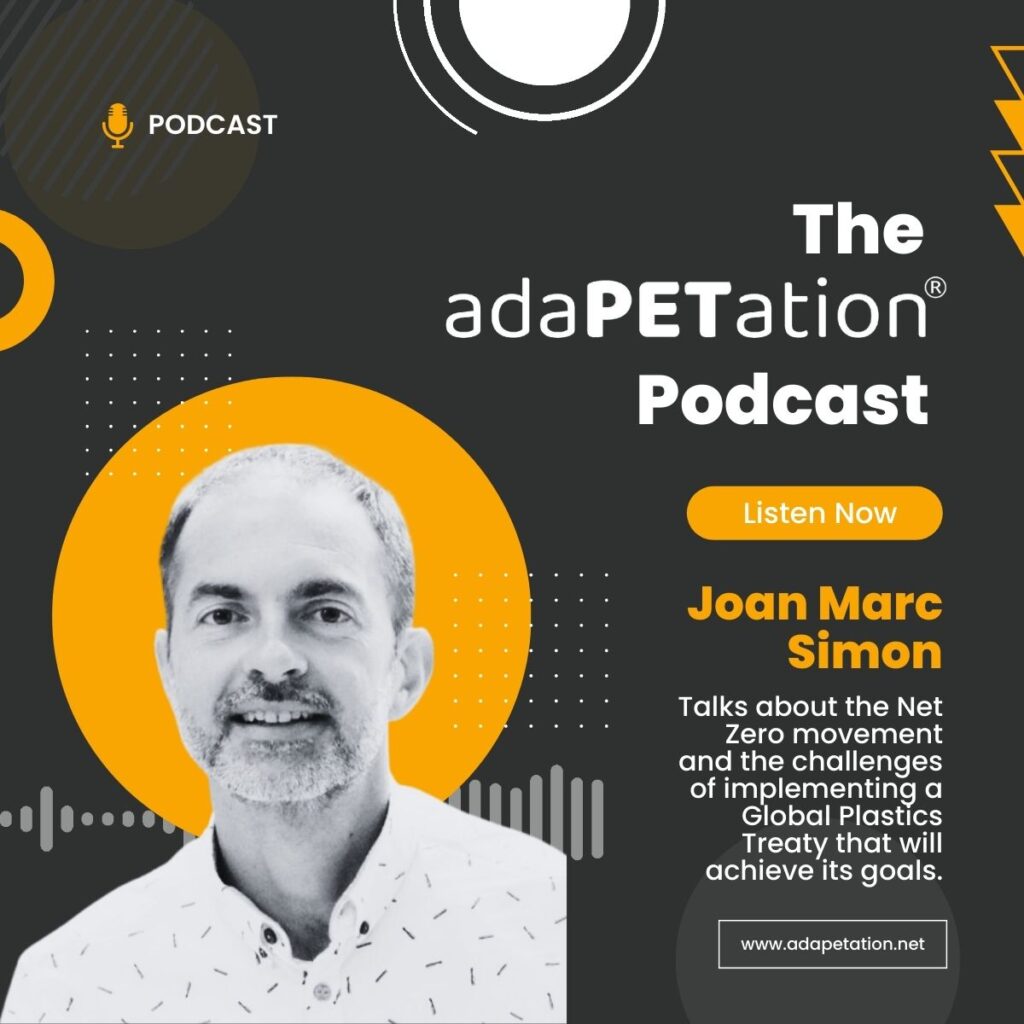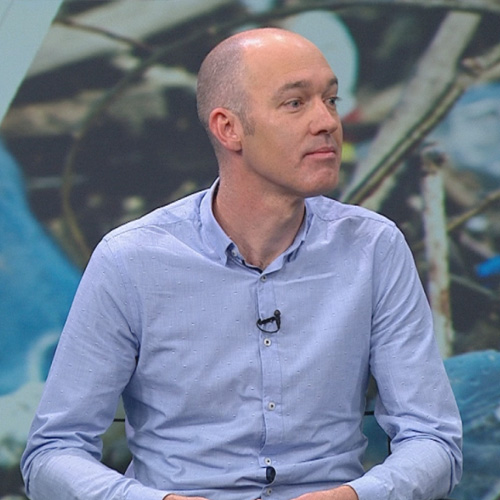
Joan Marc Simon of Zero Waste Europe sheds light on an uncomfortable truth: recycling, on its own, is not the magic bullet for the global plastic waste crisis. Is the Global Plastics Treaty being set up to fail?

As society starts to wake up to our woeful management of waste, recycling, which has long been heralded as the solution to our mounting plastic problems, continues to dominate the narrative for our future salvation.
While recycling undoubtedly has its merits, if we don’t turn off the flow of plastic further upstream this approach, on its own, might not be the panacea we have all hoped for.
The adaPETation® podcast spoke with Joan Marc Simon, an influential figure in environmental advocacy and the voice behind Zero Waste Europe on its fight to close the loop on plastic waste
“We have the most efficient systems of collection of recycling in the world and the amounts of plastic packaging continue to increase. The toxicity in the plastic packaging is only going up. And clearly, recycling is not catching up even in Europe with the magnitude of the problem that continues to grow,” he says,
The success of recycling in some types of plastic, including PET packaging, which has reached recycling levels above 80% in some European countries, are not being replicated in other less valuable plastics, leaving many frustrated with stubbornly low global recycling rates of less than 15%.
The frustration remains and begs the question, how can recycling, something we’ve been taught to believe as the solution, still fall so short of our expectations?
The Limits of Recycling
Recycling operates on the principle of turning waste once again into something valuable. But when it comes to plastic, not all forms are as recyclable as PET. Certain plastic types end up in landfills due to the lack of technology or economic feasibility to recycle them. It’s raised a fierce discussion in the ongoing discussions about the shape of a Global Plastics Treaty, currently being negotiated by the United Nations.
“The problem I see here is that we’re not asking the right question to this treaty because there are still open issues as to how we make this compatible with the climate agenda, how we make this compatible with the trade agenda, and how to make this compatible with the health agenda,” he says.
The to and fro between recycling and upstream solutions have taken center stage in the discussions surrounding the Global Plastics Treaty, a framework that will shape the future of plastic management and environmental conservation worldwide.
Within these negotiations, more conservative lobbyists including the world’s largest fossil producers have championed recycling as the principle solution to be enshrined in the treaty. Critics of this limited approach argue that it will ultimately require much greater investment and will be less effective if greater emphasis is not placed on upstream solutions that work to limit plastic production at its source.
Beyond the Recycling Bin: The Call for Reduction and Reuse
By highlighting the limitations and pitfalls of recycling-centric approaches, Simon underscores the importance of a multifaceted strategy, one that includes waste reduction, reuse, and systemic change, in addition to recycling.
If policymakers and stakeholders neglect these insights and rely predominantly on recycling, the treaty risks failing to address the root of the plastic pollution problem. Addressing such contrarian views ensures that the treaty isn’t just a band-aid solution but paves the way for genuine, sustainable change.
For real change, we need to look beyond recycling. The answer, as Simon and others suggest, lies in reduction and reuse. Reducing our consumption of plastics and reusing what we can significantly diminishes the amount of waste generated.
“Something that is key here is that we don’t repeat the mistakes in the South that we did in the north… you should not plan infrastructure to recycle 20 times more of it. If you’re going to have 20 times less because you’re going to have an effective reuse system.” he argues.
The Business of Recycling
One can’t ignore the financial allure and drivers behind recycling. It’s not just about saving the environment but also about creating profitable and tried and tested solutions.
“It’s also a good business opportunity to mobilize money and go into debt at the global level so that lots of companies can get to build lots of recycling, infrastructure, collection, infrastructure and all of that,” argues Simon.
While recycling has its role in addressing the plastic problem, it’s time for a re-shaping of the industry from the top down, one that moves us beyond our comfort zones, he argues.
A holistic solution incorporates reduction, reuse, and a realignment of our socio-economic frameworks towards sustainability. Only then can we hope to address the complex web of issues associated with plastic pollution.
JOIN THE MOVEMENT
The future of plastics is being redefined, and you can be a part of it. Listen to the full podcast with Joan Marc Simon to delve deep into the latest developments with the Global Plastics Treaty and the promise it holds. Your support can usher in a new era where plastic, once the problem, becomes an integral part of the solution. Support Net Zero Europe in its mission.
Share it
THE HISTORY OF PLASTIC
Throughout the history of plastic, PET has been crucial in keeping food fresh with lightweight and durable packaging solutions that have helped reduce food waste for almost a century. Learn all about the invention of plastic and the important role it has played feeding people and saving the lives of humans and elephants in the adaPETation® timeline of the history of plastic.





